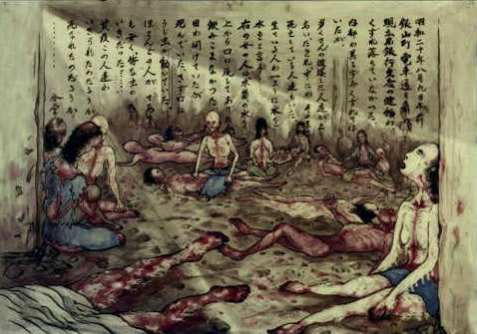The
United States dropped the first atomic bomb used in warfare on
Hiroshima, Japan. An estimated 140,000 died from the immediate
effects of this bomb and tens of thousands more died in subsequent
years from burns and other injuries, and radiation-related illnesses.
Pres. Harry Truman ordered the use of the weapon in hopes of avoiding
an invasion of Japan to end the war, and the presumed casualties likely
to be suffered by invading American troops.The weapon, “Little Boy,”
was delivered by a B-29 Superfortress nicknamed the Enola Gay, based on
the island of Tinian, and piloted by Col. Paul W. Tibbets.
On
August 6, 1995 up to 50,000 people attended a memorial service
commemorating Hiroshima Peace Day on the 50th anniversary of the first
atomic bombing.
The Day the Sun
Rose Twice
As if that wasn’t enough…..
On August 9, 1945
The
second atomic bomb, “Fatman,” was dropped on the arms-manufacturing and
key port city of Nagasaki. The plan to drop a second bomb was to test a
different design rather than one of military necessity. The Hiroshima
weapon was a gun type, the Nagasaki weapon an implosion type, and the
War Department wanted to know which was the more effective design.
Responsibility
for the timing of the second bombing had been delegated by Pres. Harry
Truman before the Hiroshima attack to Col. Paul W. Tibbets, the
commander of the 509th Composite Group on Tinian, one of the Northern
Mariana Islands in the western Pacific. Scheduled for August 11 against
Kokura, the raid was moved forward to avoid a five-day period of bad
weather forecast to begin on August 10. English translation of leaflet
air-dropped over Japan after the first bomb [excerpt]: “We are in
possession of the most destructive explosive ever devised by man. A
single one of our newly developed atomic bombs is actually the
equivalent in explosive power to what 2000 of our giant B-29s can carry
on a single mission. This awful fact is one for you to ponder and we
solemnly assure you it is grimly accurate.”
Of
the 195,00 population of the city (many of its children had been
evacuated due to bombing in the days just prior), 39,000 died and
25,000 were injured, and 40% of all residences were damaged or
destroyed.
“What
on earth has happened?” said my mother, holding her baby tightly in
her arms. “Is it the end of the world?”Sachiko Yamaguchi (nine years
old at the time of the bombing).


No comments:
Post a Comment